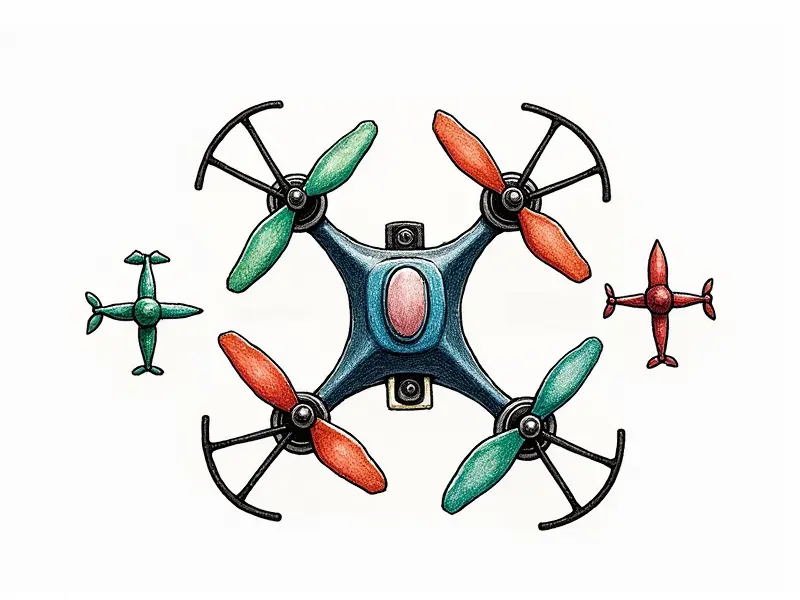Commercial drone use?

Commercial Drone Use: Revolutionizing Industries Across the Globe
The advent of commercial drones has ushered in a new era of efficiency and innovation across multiple industries. From agriculture to emergency response, these unmanned aerial vehicles (UAVs) are transforming traditional methods and opening up endless possibilities for businesses and organizations.
How Drones Are Revolutionizing Agriculture
Agriculture is one of the earliest adopters of commercial drone technology, leveraging drones for a variety of applications. Farmers use drones equipped with multispectral cameras to monitor crop health, detect pests, and optimize irrigation systems. This data-driven approach enables farmers to make informed decisions that enhance yield and reduce costs.
Benefits of Using Drones in Agriculture
- Data Collection: Drones provide high-resolution imagery and thermal maps for detailed crop analysis.
- Precision Farming: Accurate data helps farmers apply fertilizers, pesticides, and water more efficiently.
- Rapid Response: Quick assessment of field conditions allows immediate action to address issues like disease or drought.
The Future of Construction with Drones
In the construction industry, drones are becoming indispensable tools for site management and project planning. They offer real-time 3D modeling capabilities that help architects and engineers visualize projects more accurately. Additionally, drones can perform regular inspections to ensure safety standards are met.
Key Advantages of Drones in Construction
- Safety: Minimizes risks for workers by conducting dangerous tasks from a safe distance.
- Efficiency: Streamlines project management through automated data collection and analysis.
- Precision: Provides accurate measurements and models, reducing errors in construction plans.
Drones in Real Estate Photography
The real estate market has seen a significant boost from the use of drones for aerial photography. Drones capture stunning images and videos that showcase properties in ways traditional cameras cannot. This visual appeal can significantly enhance property listings, attracting more potential buyers or renters.
Advantages of Drone Photography in Real Estate
- Panoramic Views: Offers buyers a comprehensive view of the property and its surroundings.
- Differentiation: Sets properties apart from competitors with unique aerial imagery.
- Cost-Effective: Reduces the need for expensive cranes or helicopters to capture high-altitude shots.
Drones for Search and Rescue Operations
In emergency situations, drones play a crucial role in search and rescue operations. They can quickly cover large areas, providing real-time video feeds that help locate missing persons or assess damage from natural disasters. This rapid response capability saves lives and resources.
Key Features of Search and Rescue Drones
- Long Flight Time: Capable of extended missions to cover vast territories.
- Night Vision Capability: Equipped with thermal imaging for visibility in low-light conditions.
- Communication Systems: Built-in radios and GPS tracking for coordinated efforts.
Insurance Claims Made Easier by Drones
The insurance industry benefits greatly from the use of drones, particularly in assessing property damage claims. Drones can swiftly survey rooftops and other hard-to-reach areas, providing insurers with precise data to expedite claim processing.
Drones Simplify Insurance Claim Processes
- Accurate Assessments: Detailed images help identify the extent of damage accurately.
- Faster Response Times: Immediate site surveys reduce delays in claim resolution.
- Cost Savings: Minimizes expenses associated with traditional inspection methods.
Drones Enhance Wildlife Conservation Efforts
Conservationists are increasingly turning to drones for monitoring wildlife populations and habitats. These devices can track animal movements, count species numbers, and detect environmental changes without disturbing the natural environment.
Role of Drones in Wildlife Monitoring
- Non-Invasive Surveillance: Allows observation from a distance to minimize human impact on wildlife.
- Data Collection: Captures valuable data for research and conservation planning.
- Rapid Response: Enables quick action in case of threats or illegal activities.
Media Industry Embraces Drone Technology
The media industry is witnessing a surge in the use of drones for capturing unique perspectives and dynamic visuals. Journalists, photographers, and filmmakers utilize drones to produce high-quality content that engages audiences and sets new standards for storytelling.
Innovations Brought by Drones in Media
- Unique Angles: Provides access to previously unreachable vantage points.
- Efficient Production: Streamlines the production process with automated flight paths and camera settings.
- Enhanced Storytelling: Adds depth and context through aerial shots that complement ground-level coverage.
Drones Streamline Infrastructure Inspection
Maintenance of critical infrastructure such as bridges, power lines, and pipelines is made more efficient with the help of drones. They can inspect these structures without disrupting traffic or requiring shutdowns, ensuring safety while minimizing downtime.
Advantages of Drones in Infrastructure Inspections
- Risk Reduction: Eliminates hazards associated with manual inspections at heights.
- Cost Efficiency: Reduces labor costs and equipment expenses compared to traditional methods.
- Detailed Analysis: Captures high-resolution images for thorough inspection of structural integrity.
Drones Transform Emergency Medical Services
In emergency medical services, drones are being used to deliver critical supplies such as blood and vaccines. They can reach remote locations quickly, ensuring timely delivery in life-threatening situations where every second counts.
Key Benefits of Drones in EMS
- Rapid Response: Delivers medical supplies faster than ground transport.
- Remote Accessibility: Accesses areas difficult to reach by conventional means.
- Data Transmission: Transmits vital patient information to hospitals for immediate treatment planning.

